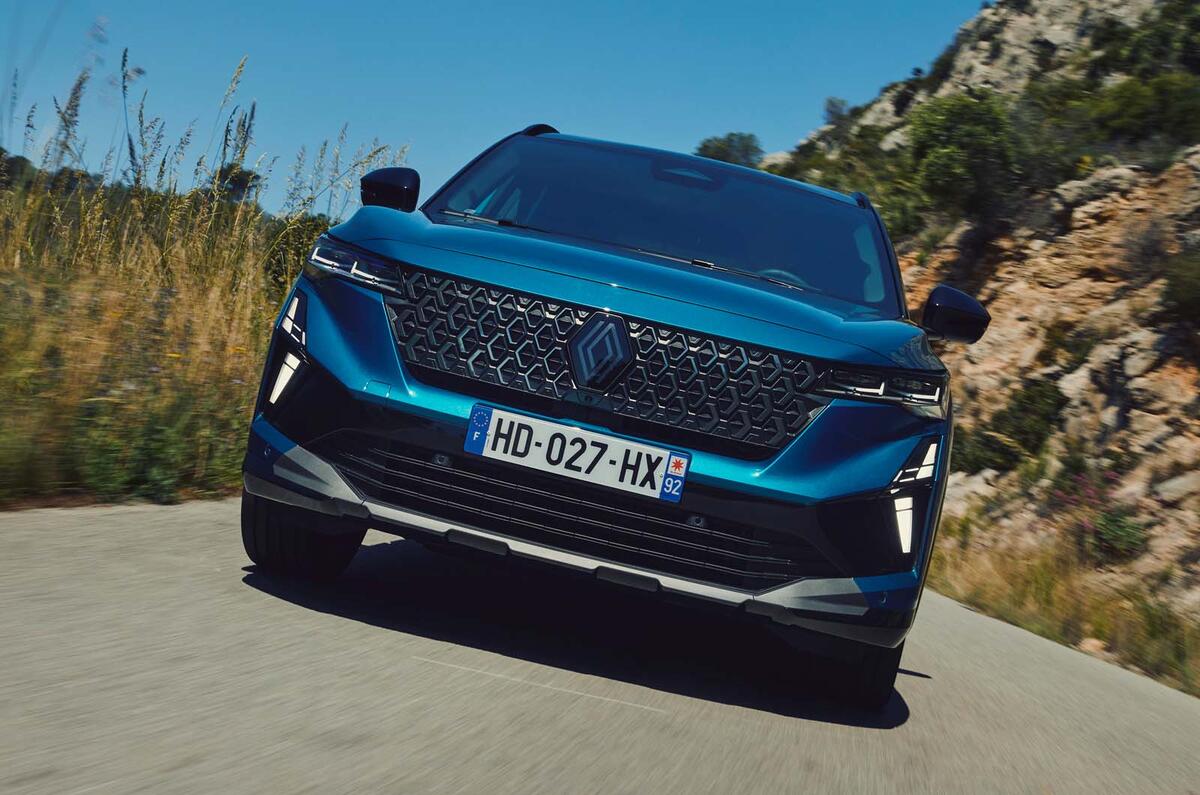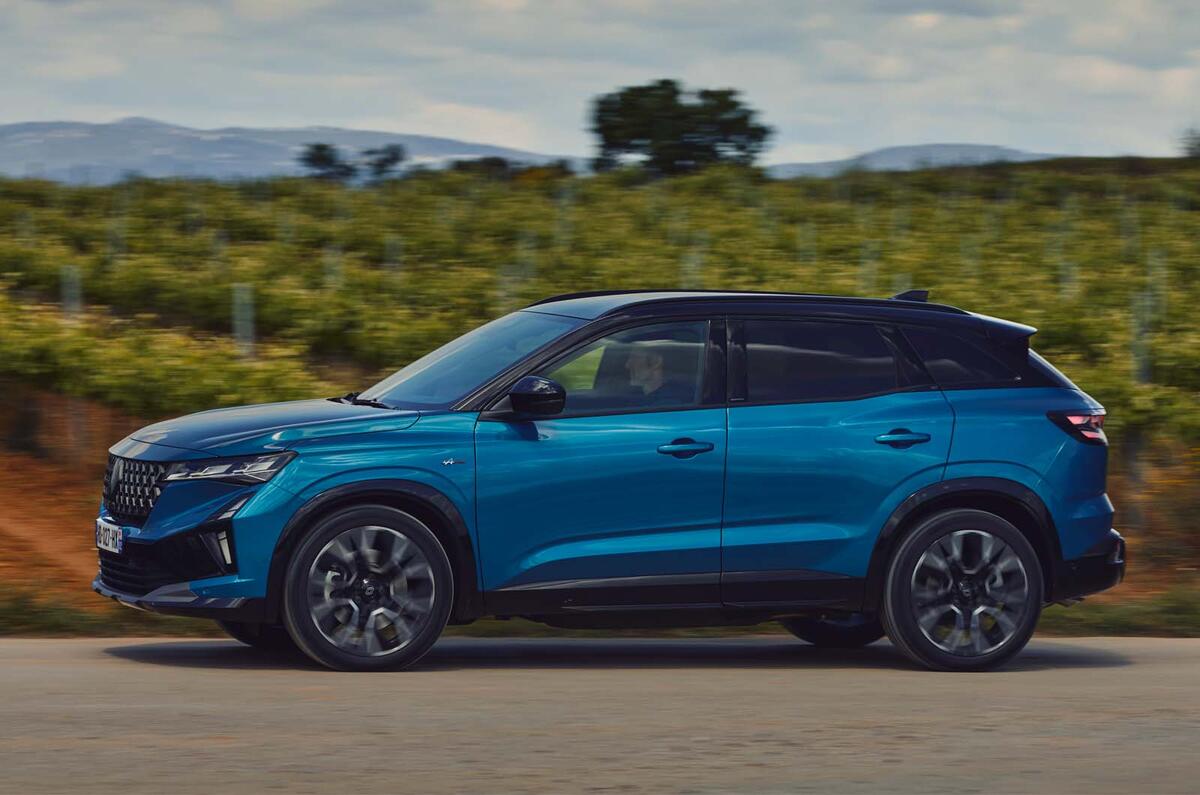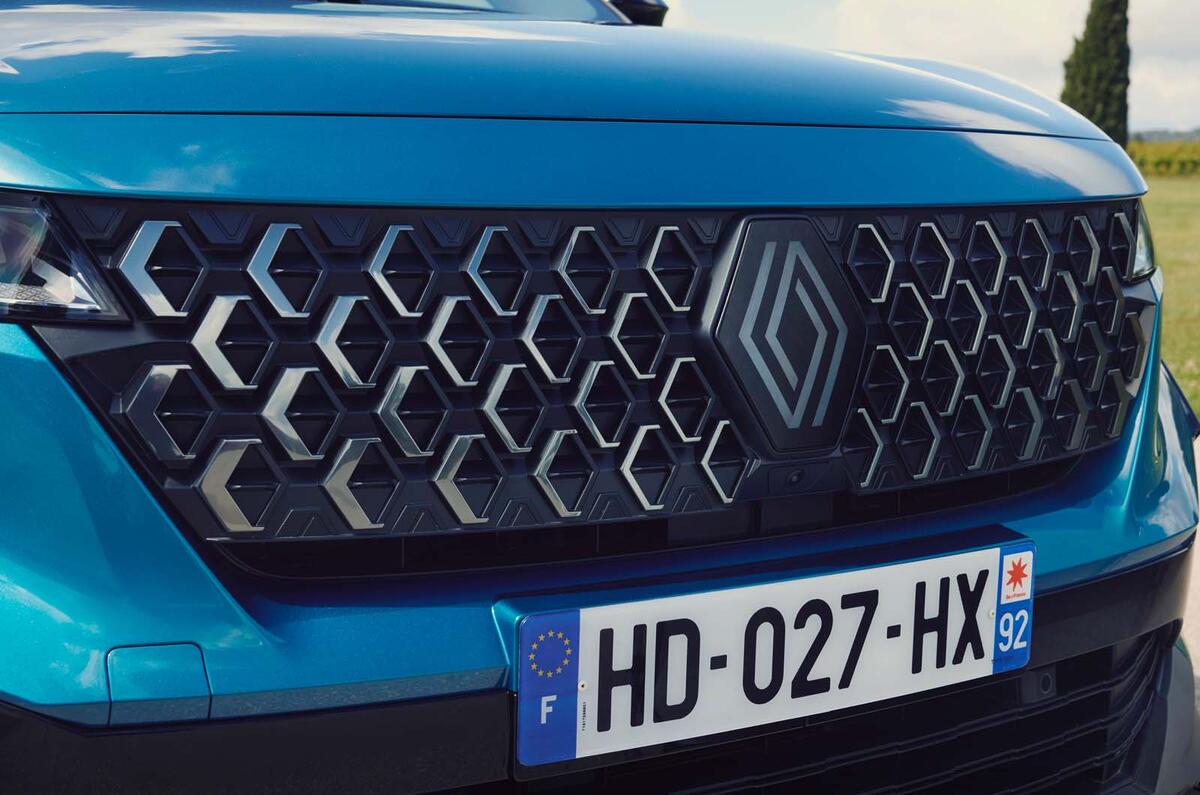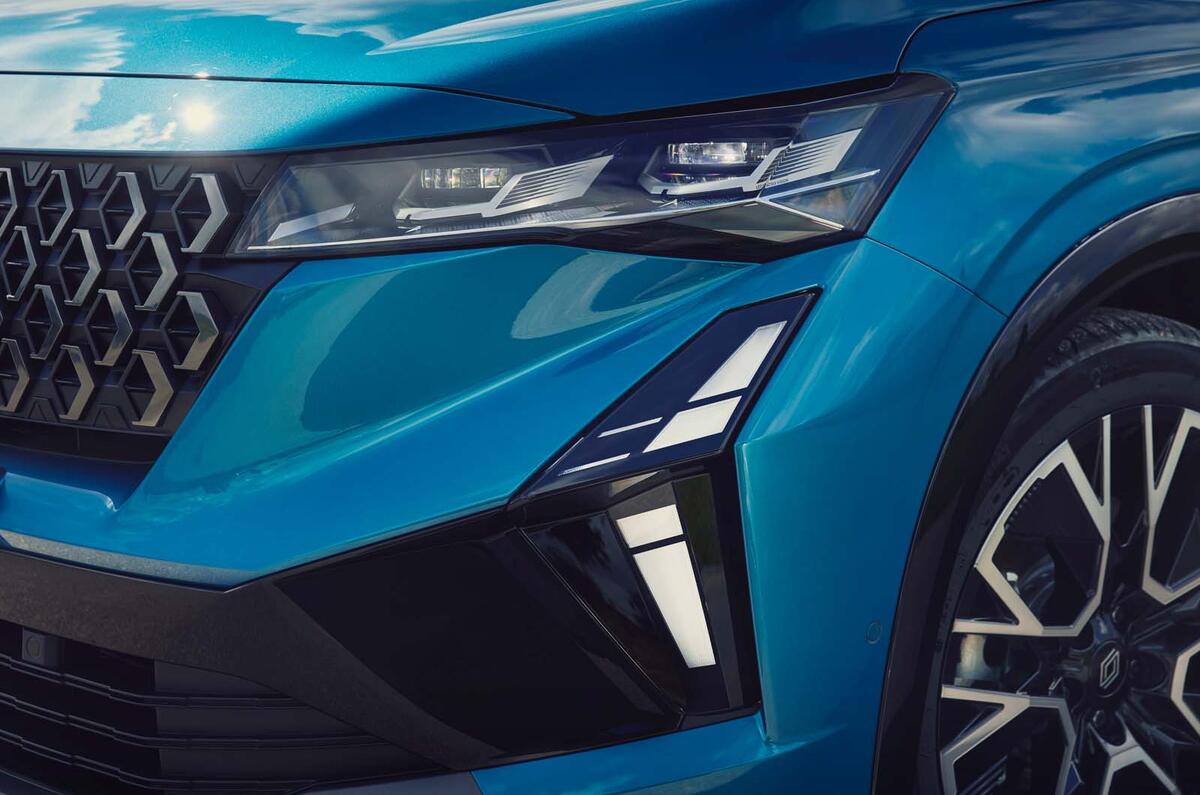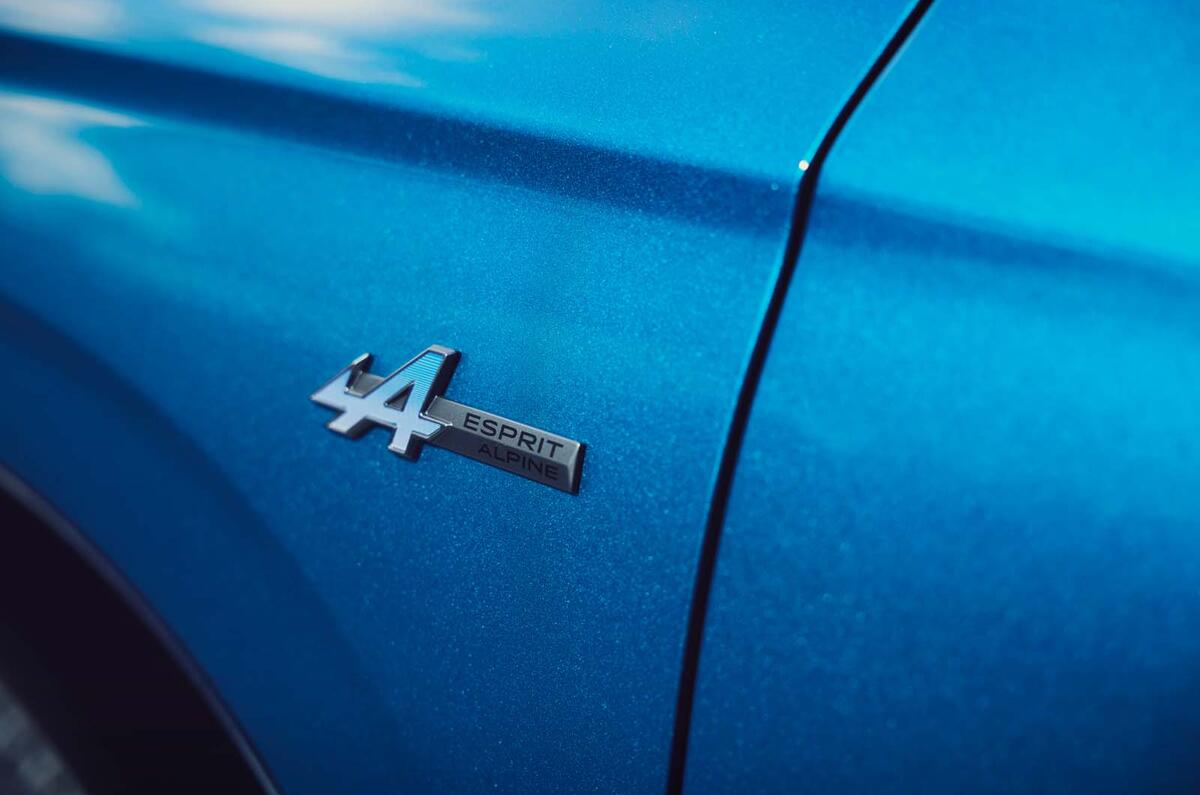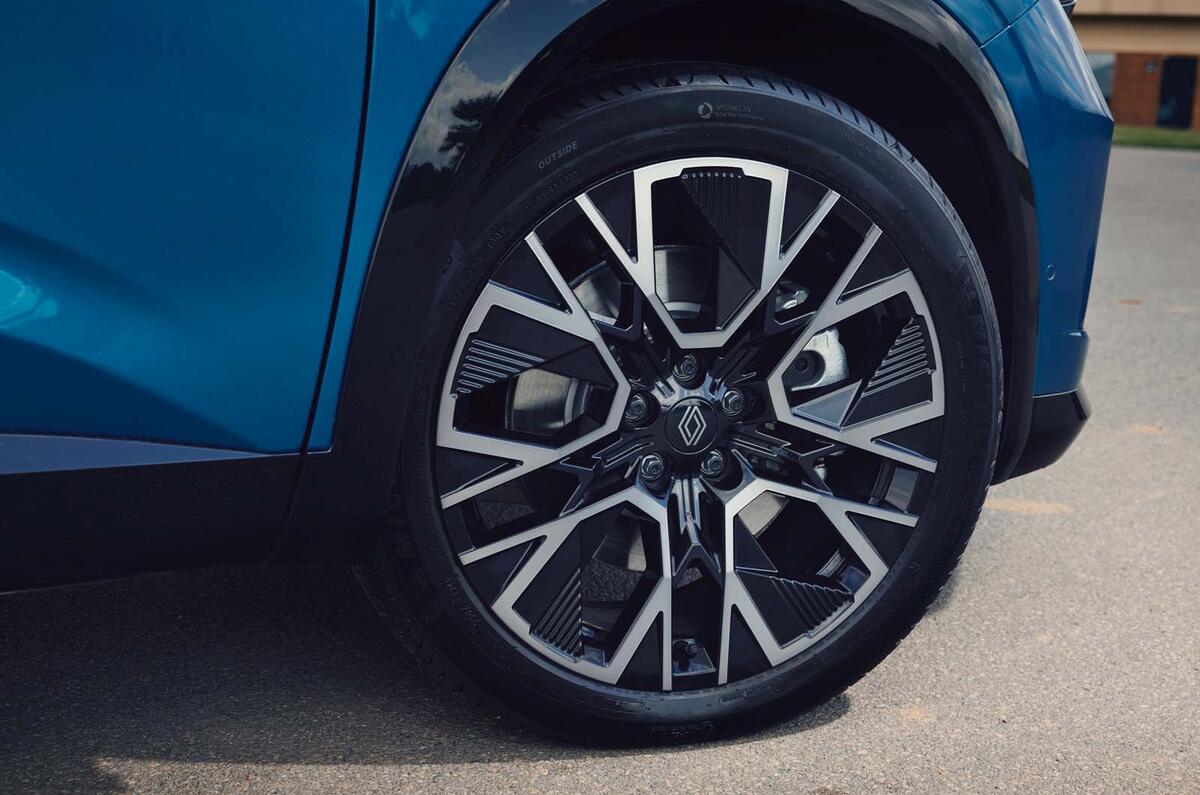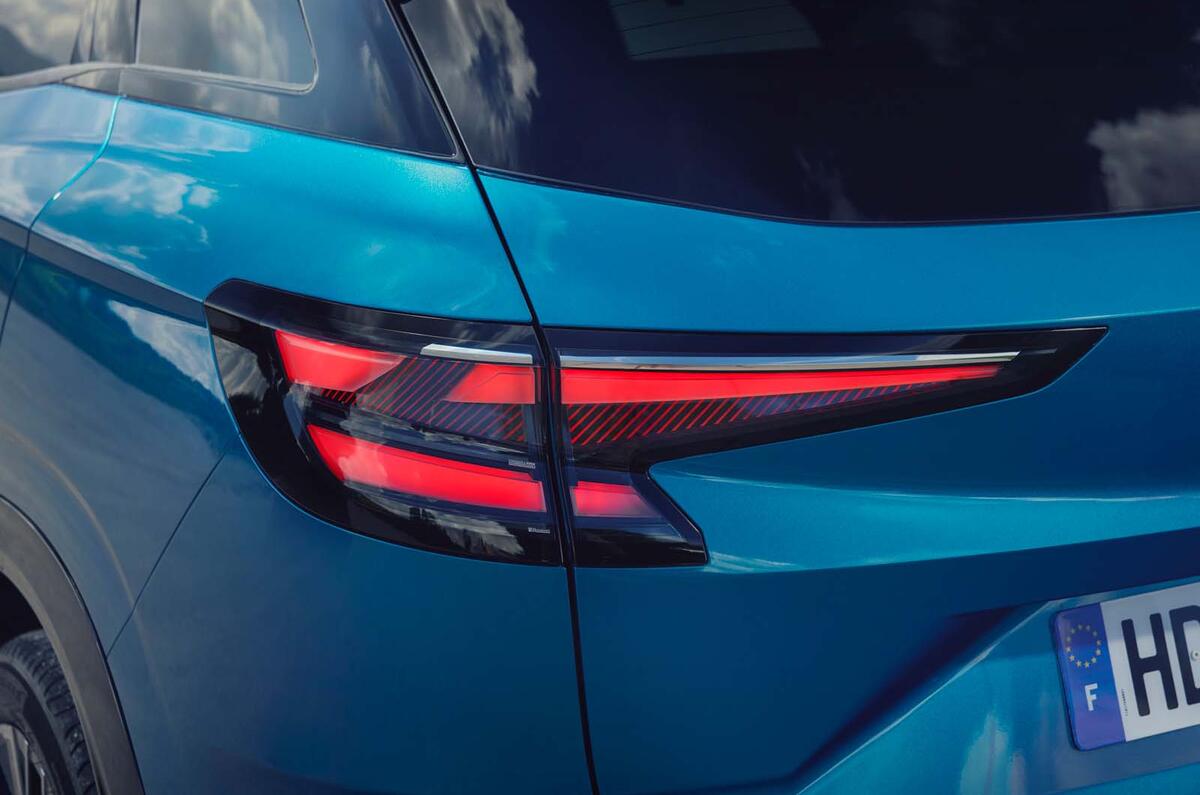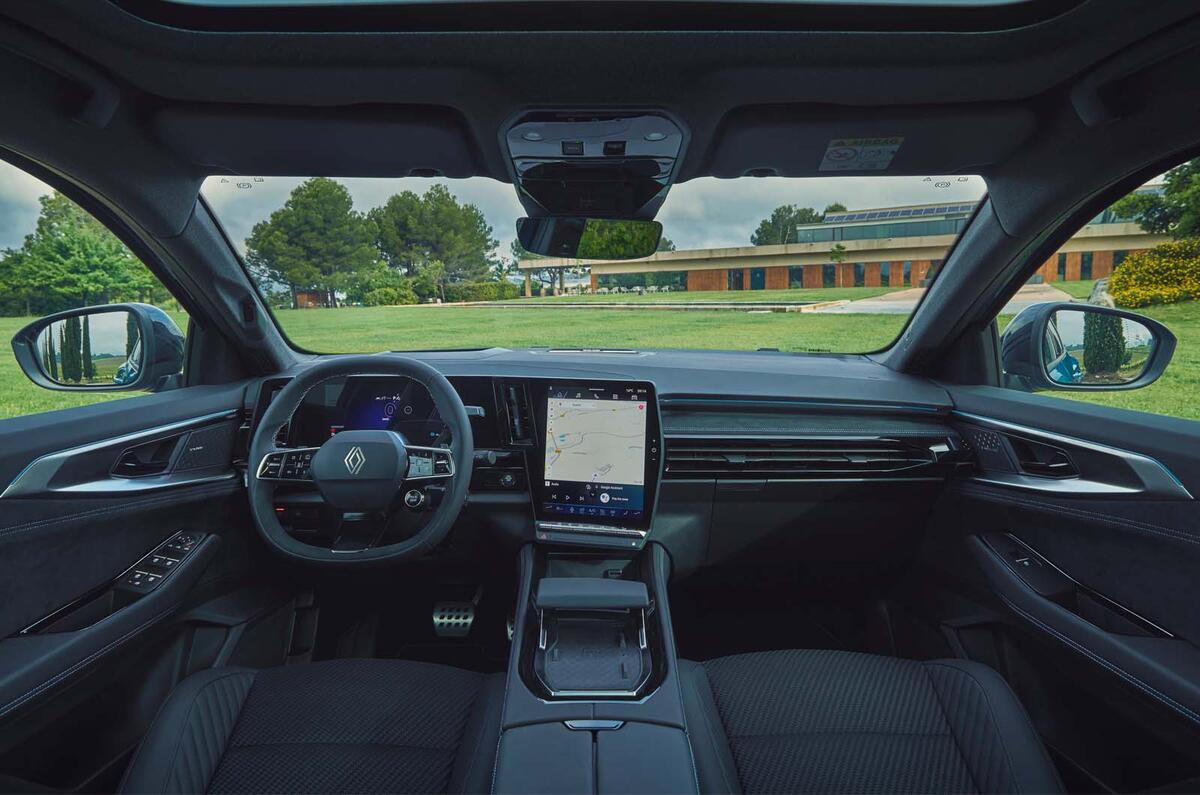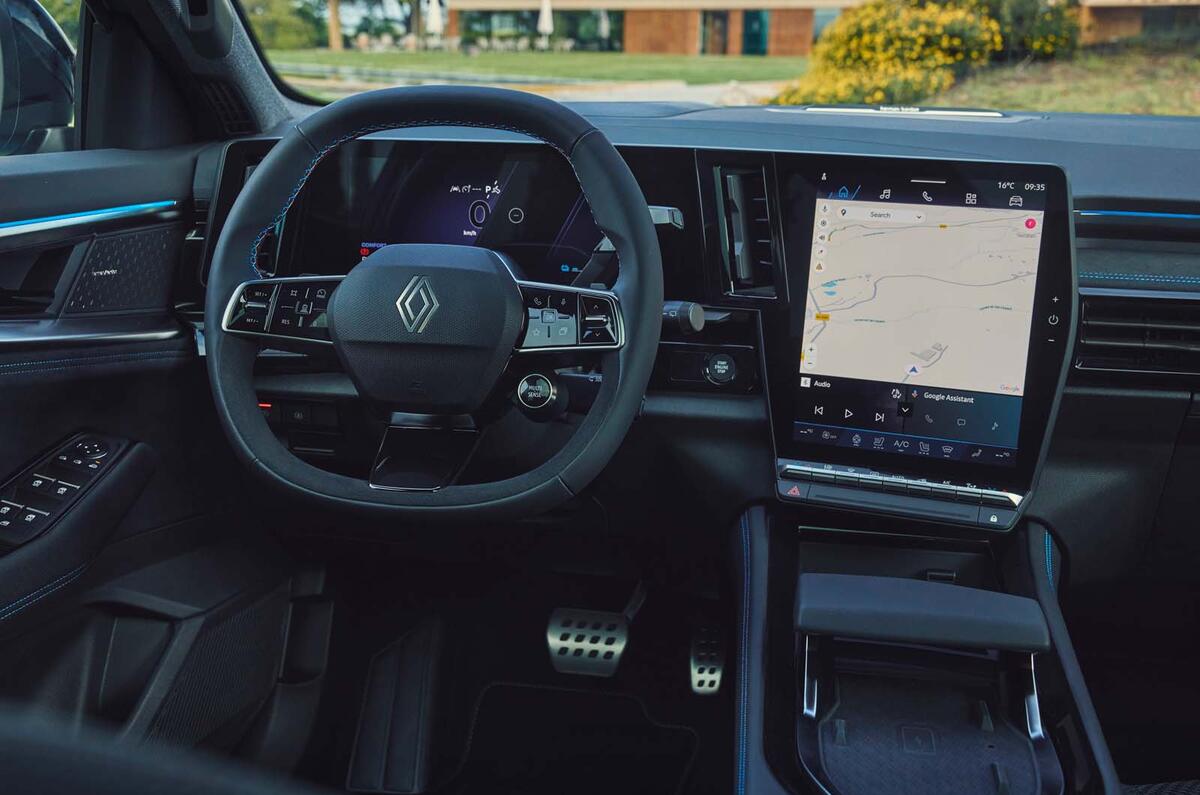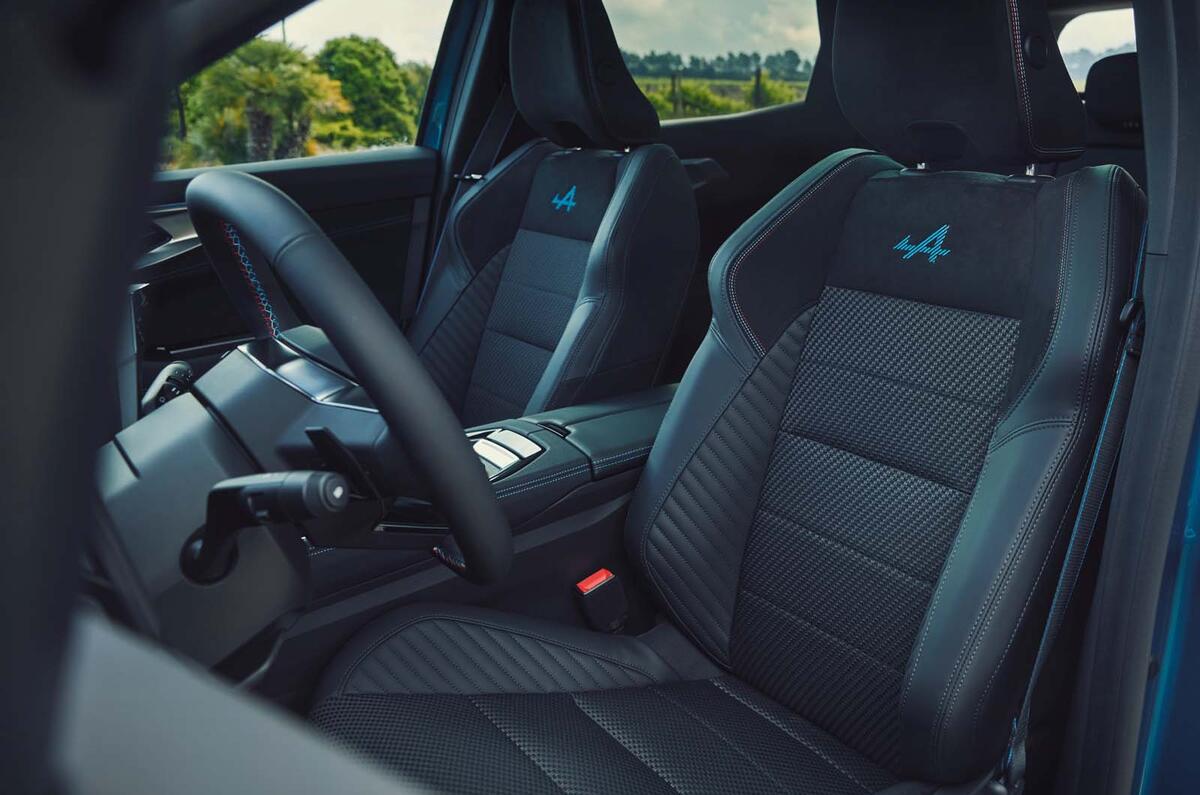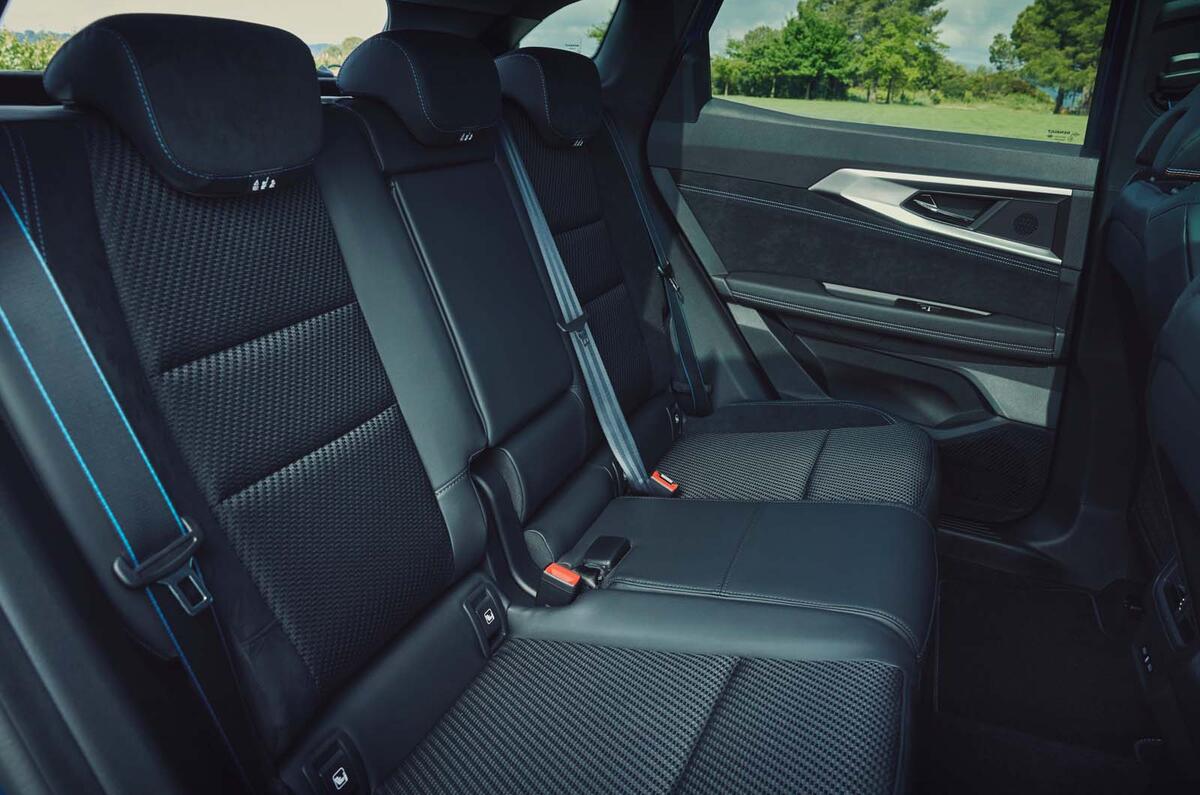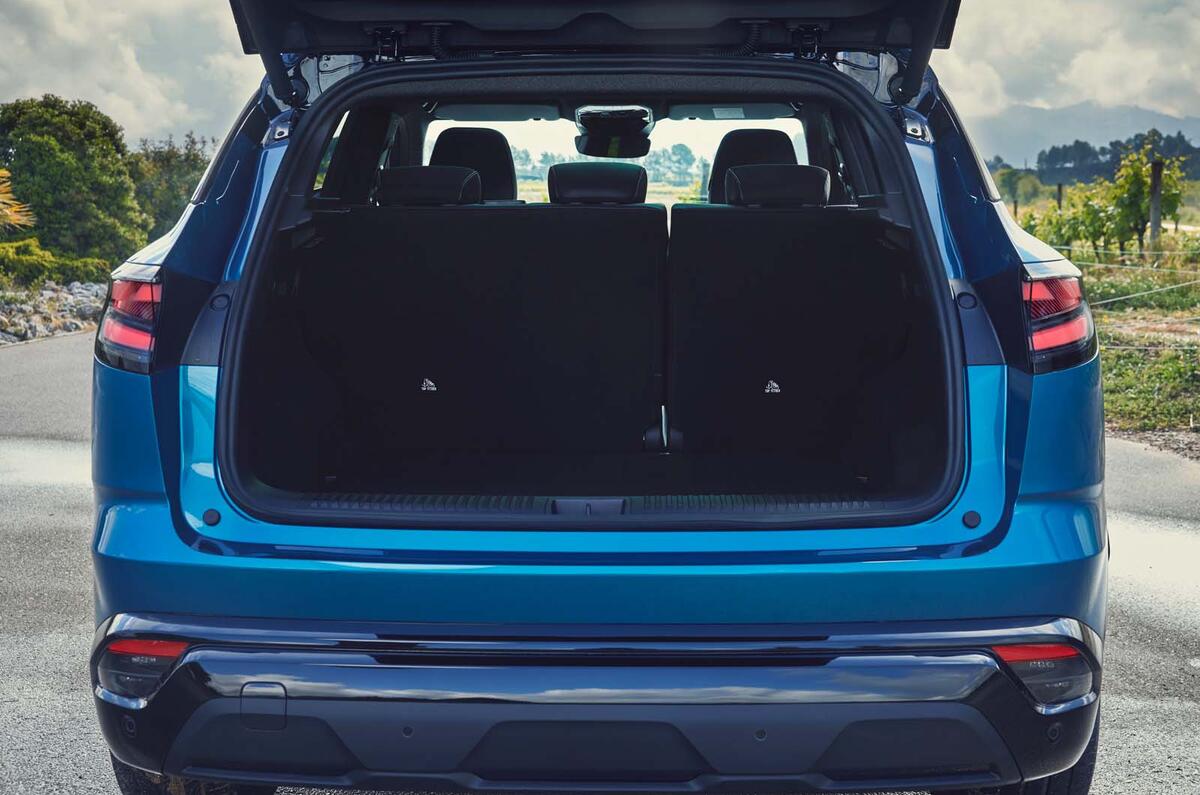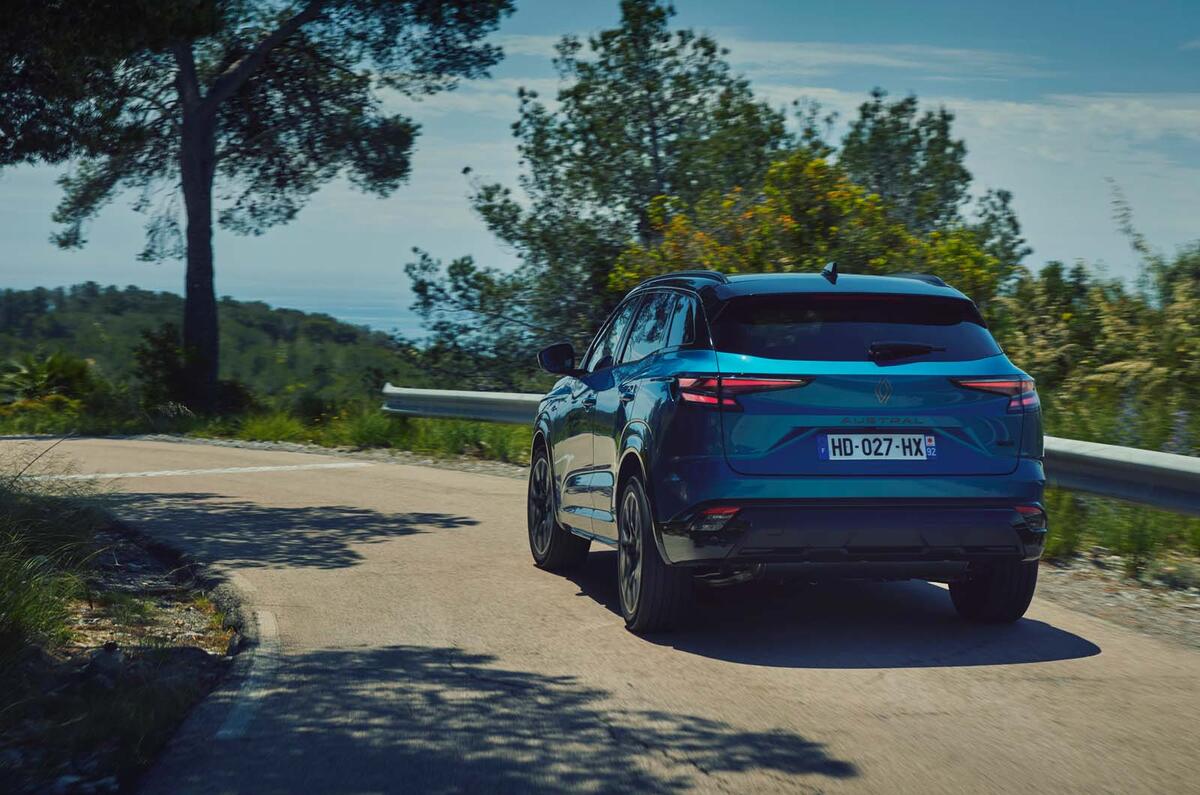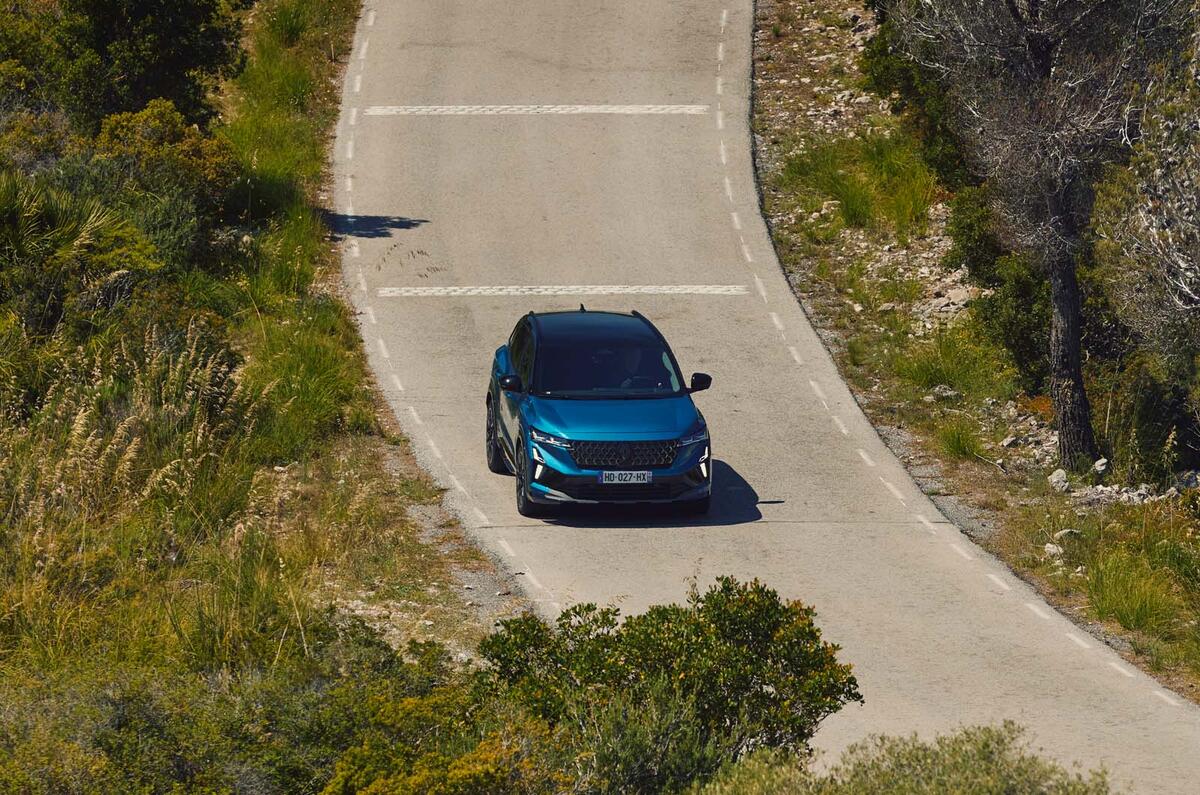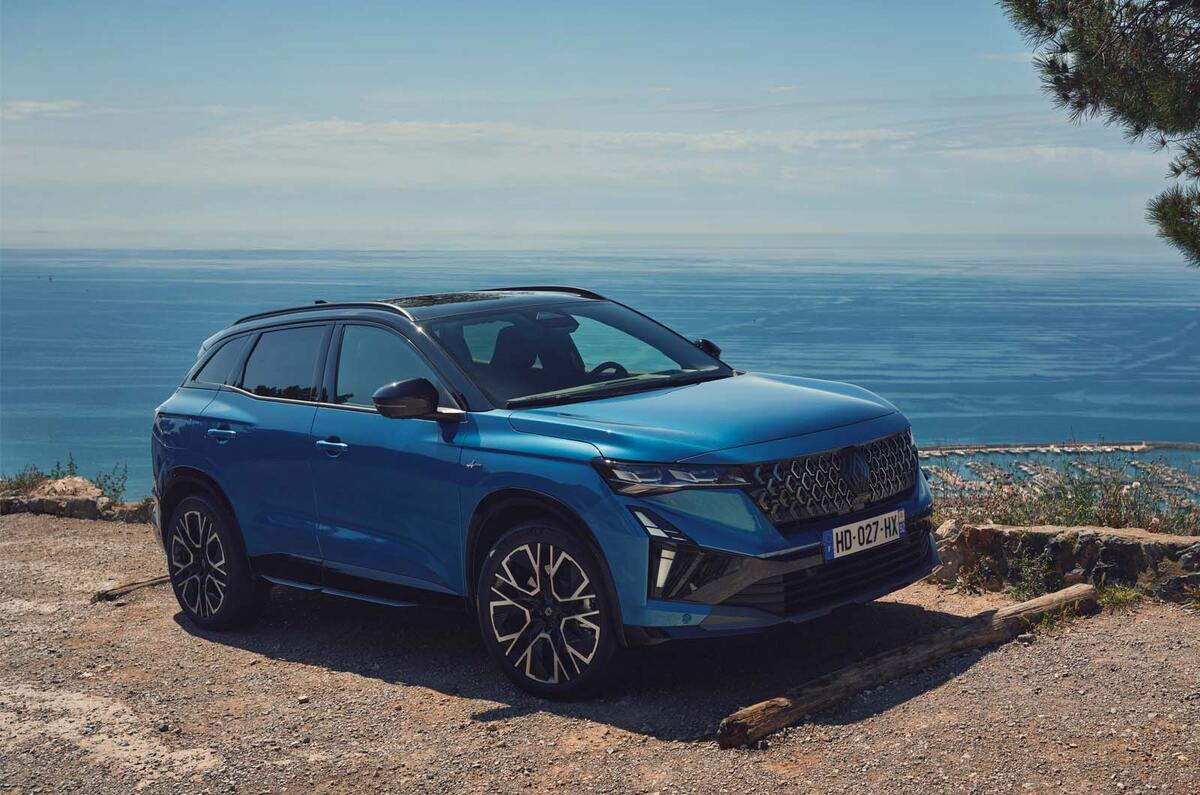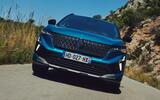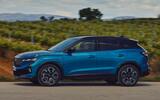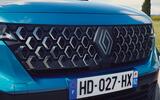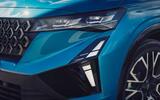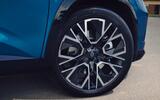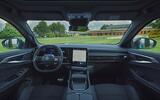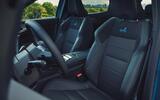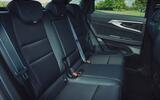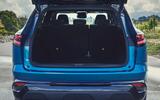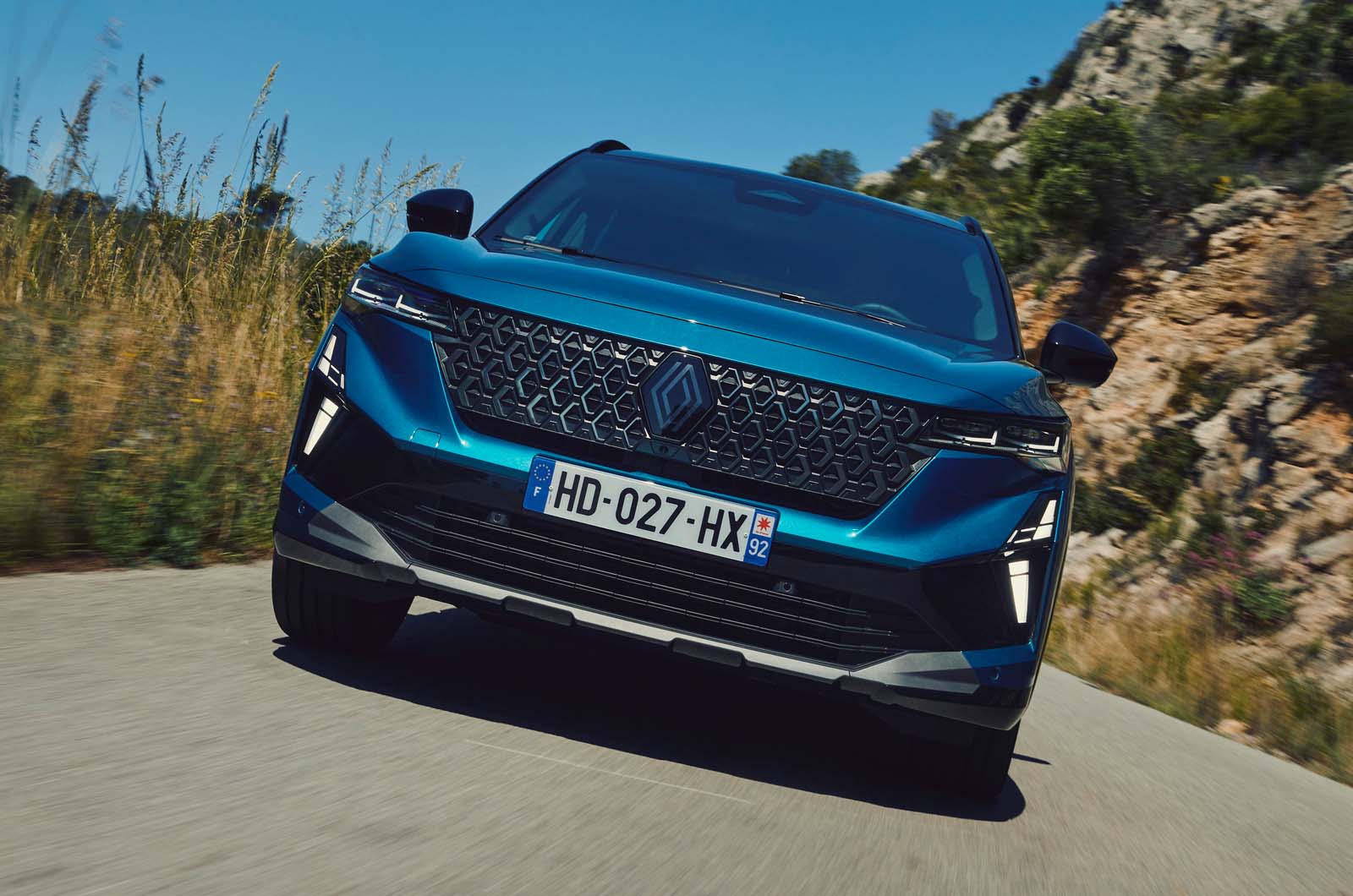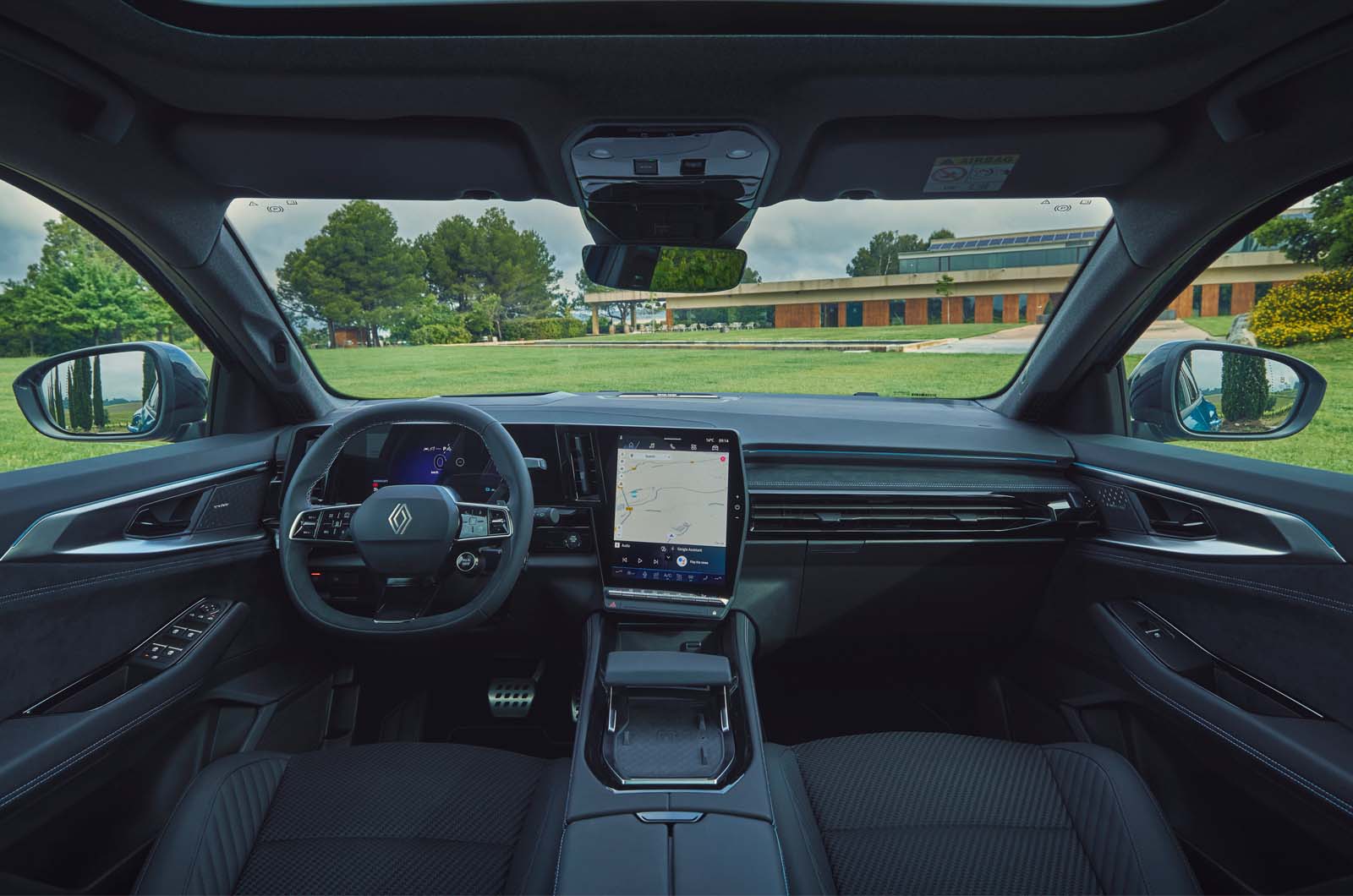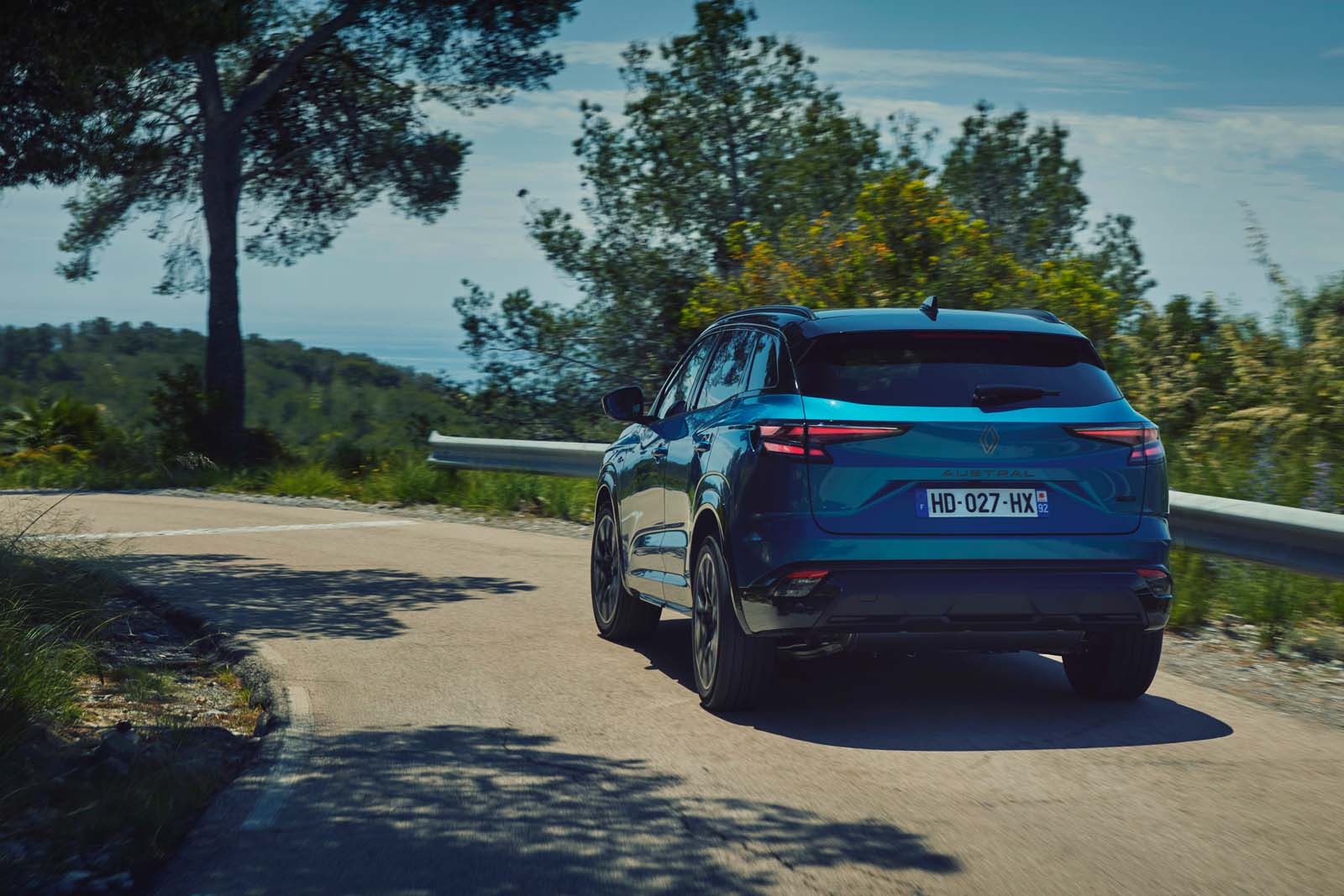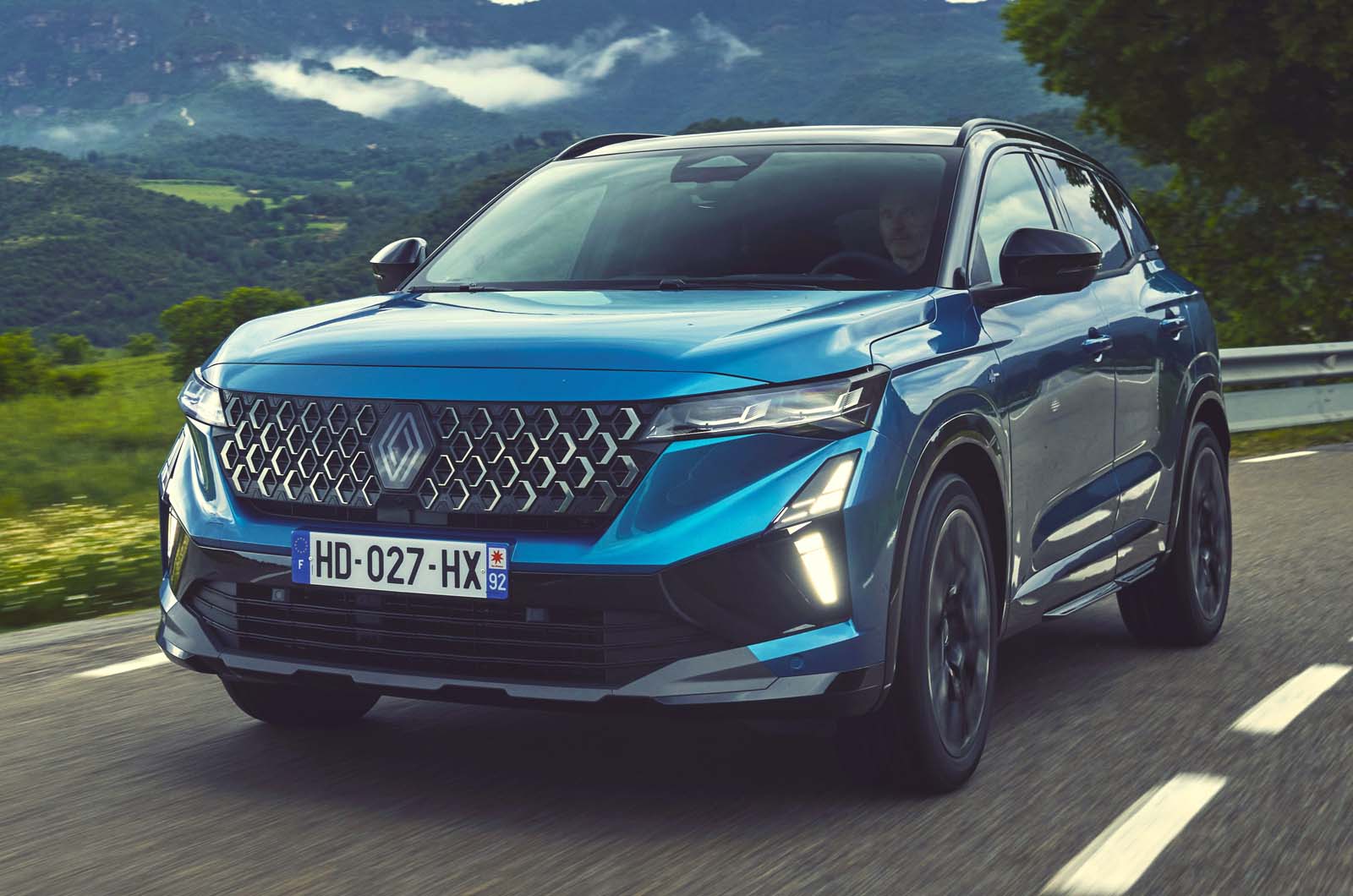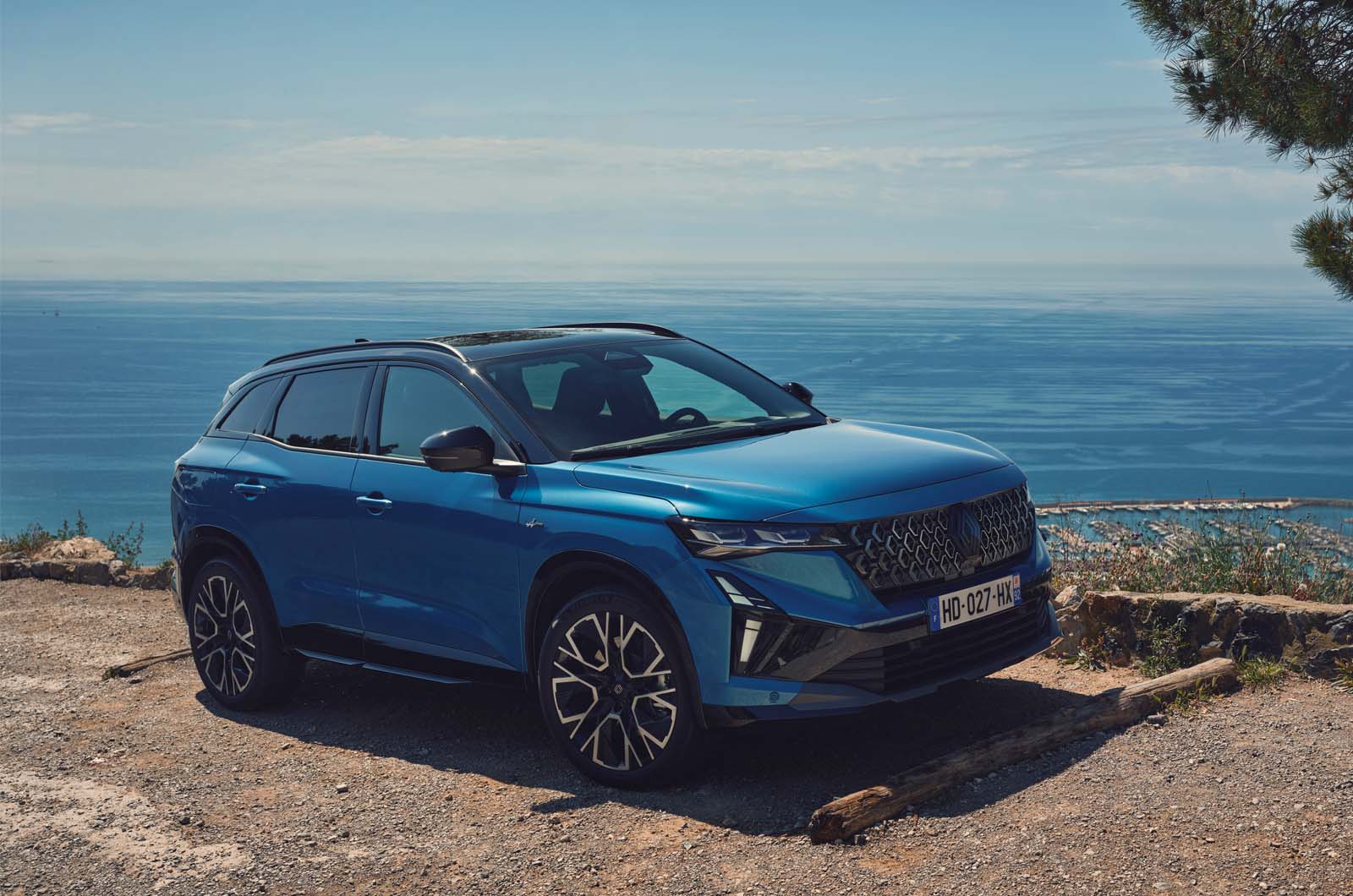Under the bonnet sits Renault’s familiar E-Tech Full Hybrid powertrain, which in this application pairs a 129bhp 1.2-litre three-cylinder turbo petrol engine with a 67bhp front-mounted electric motor and a 34bhp integrated starter-generator. All in, it makes 197bhp and 302lb ft for a rather modest 8.4sec 0-62mph time.
Like the Rafale, the Austral pulls away in pure-EV mode, with the petrol triple springing to life when you ask for more gusto. Initial response from standstill is a bit underwhelming as the car attempts to move its 1538kg heft using only the electric motor.
Select Sport mode and there’s more verve, with the engine and motor working in unison to deliver maximum power. This is especially handy when you’re powering out of corners or overtaking.
Renault has updated the software for the Austral’s ‘multimodal’ auto gearbox to improve responsiveness. You barely notice the car flicking between its two powertrains and, thanks to its large (1.7kWh) battery, you can cover meaningful distances in pure EV mode, even at higher speeds.
There’s still a bit of a pause before the gearbox finds the right ratio when you jump on the throttle. It gets pretty vocal under load, too, and even after you’ve lifted off the accelerator, the revs sometimes remain high before it eventually upshifts.
That being said, the Austral’s engine doesn’t sound unrefined, and it’s well isolated, thanks to that additional soundproofing over the previous version. There’s still some vibration and grumble when the engine kicks into life, however.
As a driver, you have absolutely no control over the car’s gear selection, so you might be surprised to find paddles behind the steering wheel. Instead, they control the regenerative braking system, a feature more typically associated with pure-electric cars, but made possible by the Austra's big battery and electric motor.
While the regenerative system works well and easily adjusted, the brake pedal is a bit over-sensitive and harder to modulate when both systems are working in unison. Turn the regenerative brakes off and the pedal has more feel.
Overall, it's refined hybrid powertrain and feels as good, if not better than those from Kia, Nissan, and Toyota.




